HACCP: A Practical Approach 3rd Edition
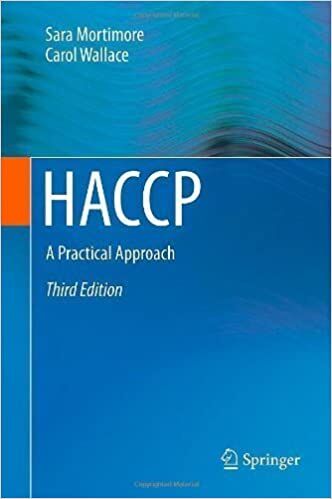
By Sara Mortimore and Carol Wallace
This Book is Available For Premium Members Only

By Sara Mortimore and Carol Wallace
Foreword
Chapter 1: An Introduction to HACCP and Its Role in Food Safety Control
1.1 HACCP: The Basic Questions Answered
1.1.1 What Is HACCP?
1.1.2 What Are the Principles of HACCP?
1.1.3 Where Did HACCP Come from?
1.1.4 So, Why Should You Use HACCP?
1.1.5 Why Can´t We Rely on Inspection and Testing?
1.1.6 What Are the Benefits?
1.1.7 Is HACCP All I Need to Do for Food Safety?
1.1.8 Can HACCP Be Used to Reduce Food Safety Risk in the Absence of Adequate PRPs?
1.1.9 Is HACCP Applicable to Everyone?
1.1.10 Why Should I Revisit My HACCP Program? I´ve Done This Already
1.2 External Position and Drivers for HACCP Use
1.2.1 Customers and Consumers
1.2.2 International Government Regulation
1.2.3 Government Inspectors and Enforcers
1.2.4 International Standardization
1.2.5 Media Issues and Brand Protection
1.3 Problems with Effective Implementation of HACCP: Why HACCP Fails
1.3.1 Examples of Food Safety Incidents
1.3.2 Failure to Understand HACCP: Common Misconceptions
1.4 Key Points Summary
Chapter 2: Preparation and Planning to Achieve Effective Food Safety Management
2.1 The Key Stages of HACCP
2.2 Preparing the Way: Personnel and Training
2.2.1 Personnel Resources
2.2.2 What Are the Training Requirements?
2.3 What Is Our Current Status? Baseline Audit and Gap Analysis
2.3.1 Performing the Gap Analysis: Questions to Consider for PRP Assessment
2.4 Use of the Hazard Analysis and Risk Evaluation Process as an Enabler to GMP Improvement
2.5 How Do We Get There? Project Planning
2.5.1 What Structure Should the HACCP System Take?
2.5.2 Using Project Planning Techniques
2.5.3 Drawing up the Project Plan
2.6 Continuous Improvement
2.7 Key Point Summary
Chapter 3: Hazards, Their Significance, and Control
3.1 Hazards and Their Significance
3.1.1 Hazards and the Consumer
3.1.2 Assessing Hazard Significance
3.2 Understanding Control Measures for Practical Hazard Control
3.3 Biological Hazards
3.3.1 Biological Hazards and the Consumer
3.3.2 Major Pathogenic Bacteria of Relevance to Food
3.3.3 Viruses
3.3.4 Parasites and Protozoa
3.3.5 Prions
3.3.6 Emerging Pathogens
3.3.7 Animal Pathogens of Relevance to the Global Food Supply Chain
3.4 Control of Biological Hazards
3.4.1 Intrinsic Factors
3.4.2 Process Technologies
3.4.3 Summary of Control Options for Biological Hazards (Table3.7)
3.5 Chemical Hazards
3.5.1 Mycotoxins
3.5.2 Marine Toxins (Fish and Shellfish Poisoning)
3.5.3 Cleaning Chemicals
3.5.4 Pesticides
3.5.5 Allergens and Food Intolerances
3.5.6 Toxic Metals (also known as heavy metals)
3.5.7 Nitrites, Nitrates, and N-nitroso Compounds
3.5.8 Polychlorinated Biphenyls
3.5.9 Dioxins and Furans
3.5.10 Polycyclic Aromatic Hydrocarbons
3.5.11 Plasticizers and Packaging Migration
3.5.12 Veterinary Residues
3.5.13 Melamine and Cyanuric Acid
3.5.14 Chemical Additives
3.6 Control of Chemical Hazards
3.6.1 Summary of Control Options for Chemical Hazards (Table3.9)
3.7 Physical Hazards
3.7.1 Glass
3.7.2 Metal
3.7.3 Stones
3.7.4 Wood
3.7.5 Plastic
3.7.6 Pests
3.7.7 Intrinsic Material
3.8 Control of Physical Hazards
3.8.1 Summary of Control Options for Physical Hazards (Table3.10)
3.9 Radiological Hazards
3.10 Conclusions
3.11 Key Points Summary
Chapter 4: Prerequisites for Food Safety: PRPs and Operational PRPs
4.1 Definitions and Standards
4.1.1 Definitions
4.1.2 Standards and Guidelines
4.2 Environment, Programs, and People
4.2.1 Environmental Focus: Design for Good Hygiene
4.2.2 Programs
4.2.3 People
4.3 Validation and Verification of PRPs
4.4 Key Points Summary
Chapter 5: Designing Food Safety
5.1 Product Safety Design
5.1.1 Designing Your Recipe Formulation
5.1.2 Designing Safe Processes
5.1.3 Safe Raw Materials for Safe Product Design
5.1.4 Establishing a Safe and Achievable Shelf-Life
What Factors Could Cause the Product to Become Unsafe?
How Do You Know When Pathogens Reach Unsafe Levels?
5.2 Prerequisite Program Design
5.3 Equipment and Factory Design for Product Safety
5.4 Product Safety Assessment
5.4.1 Development Specification
5.4.2 Product Concept Safety Considerations
5.5 Key Points Summary
Chapter 6: How to Do a HACCP Study
6.1 What Is the HACCP Plan?
6.1.1 The Process Flow Diagram
6.1.2 The HACCP Control Chart
6.2 Define Your Terms of Reference
6.3 Describe the Products and Their Intended Use
6.4 Constructing a Process Flow Diagram
6.4.1 Types of Data
6.4.2 Style
6.4.3 Verify as Correct During Manufacture
6.5 Carrying out the Hazard Analysis
6.5.1 The Structured Approach to Hazard Analysis
6.5.2 Questions to Be Considered
6.5.3 Ensuring Sufficient Detail
6.5.4 Severity and Hazard Significance
6.5.5 Reference Materials: Where to Find Them and How to Use Them
6.5.6 Identifying Control Measures
6.6 Making Food Safety Decisions
6.6.1 Where Are the Critical Control Points?
6.6.2 Use of CCP Decision Trees for Raw Materials
6.6.3 Use of CCP Decision Trees for Process Steps
6.6.4 Operational PRPs
6.7 Building Up the HACCP Control Chart
6.7.1 What Are the Critical Limits?
6.7.2 Validating Your Critical Limits
6.7.3 Confirming Process Capability
6.7.4 Finding the Right Monitoring Procedure
6.7.5 Corrective Action Requirements
6.8 Validation of the HACCP Plan
6.9 Key Point Summary
Chapter 7: Implementation, Verification, and Maintenance for Ongoing Risk Management
7.1 Implementation of the HACCP plan
7.1.1 Preliminary Steps: Challenging Your Controls and Corrective Action Systems
7.1.2 Implementation Requirements and Action Planning
7.2 Set Up CCP Management Systems: Monitoring, Corrective Action and Record Keeping Requirements
7.2.1 Developing Monitoring Records
7.2.2 Monitoring Methods: Use of Statistical Techniques
7.2.3 Corrective Action: Requirements for Reporting and Acting on Deviations
7.2.4 Feedback on Results
7.3 Additional Facilities and Equipment for HACCP Implementation
7.3.1 Facilities
7.3.2 Equipment
7.3.3 CCP Identification on Facilities and Equipment
7.3.4 Modifications: Are They Complete?
7.4 Education and Training
7.4.1 Foundation Training
7.4.2 CCP Monitors
7.5 Confirm Implementation Actions Are Complete: Verification of Implementation
7.6 Verification as a Way of Life
7.6.1 Records Review: Analysis of Data
Why Analyze Data?
What Data Should Be Available?
How Should the Data Be Analyzed?
7.6.2 Calibration
7.6.3 Verification Through Observation and Scheduled Audit
7.7 HACCP system Maintenance
7.7.1 Safety Review for Product and Process Changes
7.7.2 Information Searching: Keeping Up to Date with Emerging Issues/Hazards
7.7.3 Formal Periodic System Review
7.7.4 Documentation Update: Amending Your HACCP plan
7.7.5 Ongoing Training Requirements
7.7.6 Incident Management
7.7.7 Ongoing Documentation and Record Keeping
7.8 Key Points Summary
Chapter 8: Considerations for HACCP Application in Different Supply Chain Sectors
8.1 Introduction
8.2 HACCP Application in Packaging Production
8.3 HACCP Application in Animal Feed
8.3.1 Introduction
8.3.2 What Are the Hazards?
8.3.3 Typical Control Measures
8.3.4 Approach(es) Taken
8.3.5 Difficulties and Issues
8.4 HACCP Application in Primary Production
8.5 HACCP Application at Slaughter/Harvest
8.6 HACCP in Manufacturing
8.7 HACCP Application in Retail: The Supermarket
8.7.1 Introduction: HACCP in the Supermarket
8.7.2 Approach Taken
8.7.3 What Are the Hazards?
8.7.4 Benefits
8.7.5 Challenges and Issues
8.8 HACCP Application in Catering
8.8.1 Introduction
8.8.2 What Are the Hazards?
8.8.3 Typical Control Measures
8.8.4 Approaches Taken
8.8.5 Difficulties and Issues
8.9 Special Considerations for HACCP Application in Chain Restaurants
8.9.1 Introduction
8.9.2 What Are the Key Differences?
8.10 HACCP in Storage and Distribution
8.10.1 Introduction
8.10.2 What Are the Hazards?
8.10.3 Typical Control Measures
8.10.4 Approaches Taken
8.10.5 Difficulties and Issues
8.11 The Consumer
8.12 Reflections of HACCP Application Throughout the Food Supply Chain
Appendix B Pathogen Profiles
Pathogen Profiles-Part 1: Bacterial Pathogens
Pathogen Profiles-Part 2: Toxigenic Fungi
Pathogen Profiles-Part 3: Foodborne Viral Pathogens
Appendix C Glossary
Appendix D Abbreviations and Definitions
Index
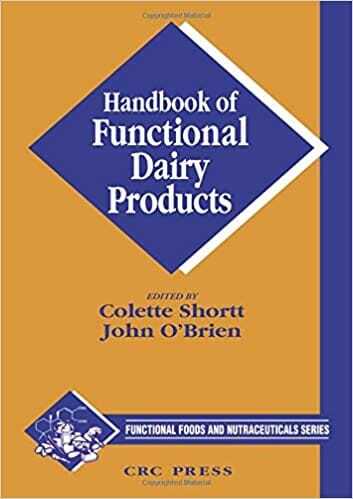
By Colette Shortt and John O’Brien
Handbook of Functional Dairy Products PDF. Functional dairy products have been the focus of intense research and product development over the last two decades. At last, this valuable information has been compiled into one resource that reveals key advances in functional dairy ingredients and products and identifies directions for marketing and product development.
Handbook of Functional Dairy Products explores the product development process and the market dynamics driving product innovation. Chapters examine specific ingredients and products, safety and technology issues, the impact of biotechnology, the regulatory environment, and the communication of health benefits. Emphasis is placed on the potential contribution of functional dairy products in the maintenance of health and prevention of disease, and includes in-depth discussions of the selection, production, and benefits of probiotics, dairy-derived carbohydrates and prebiotics, bioactive peptides, the immune modulating effects of dairy ingredients, the health effects of conjugated linoleic acid (CLA), and calcium and iron fortification.
With a wealth of new research findings and insightful guidance for food product developers, this comprehensive reference is a must for everyone involved in the science, development, and marketing of functional dairy products.
Overview of Opportunities for Health Enhancing Functional Dairy Products.
Successful Probiotic Lactobacilli: Human Studies on Probiotic Efficacy.
Successful Probiotic Bifidobacteria.
Lactose Intolerance and Low-Lactose Dairy Products.
Trans-Galactooligosaccharides as Prebiotics.
Milk-Derived Bioactive Peptides: Formation and Prospects for Health Promotion.
Immune Modulation by Dairy Ingredients: Potential for Improving Health.
Conjugated Linoleic Acid.
Calcium Bioavailability of Dairy Products, David D. Kitts.
European Perspective on the Development of a Health Claim Dossier for a Functional Dairy Product.
Communicating the Science Behind the Health Benefits of Dairy Products: The American Experience.
Biotechnology of Food Cultures for the Nutritional Enhancement of Milk and Dairy Products.
The Safety Evaluation of Functional Dairy Foods
| File Size | 5 MB |
| File Format | |
| Download link | Free Download | Become a Premium, Lifetime Deal |
| Support & Updates | Contact Us | Broken Link |
| Join Our Telegram Channel |  |
| More Books: | Browse All Categories |
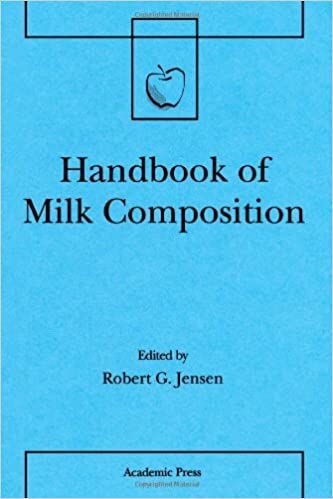
By Robert G. Jensen
Handbook of Milk Composition PDF offers a concise collection of existing, expert data summarizing the composition of milk. The Handbook of Milk Composition summarizes current information on all aspects of human and bovine milk, including: sampling, storage, composition, as well as specific chapters on major and minor components such as protein, carbohydrates, lipids, electrolytes, minerals, vitamins and hormones. Handbook of Milk Composition also features comprehensive coverage of compartmentation, host-defense components, factors affecting composition, composition of commercial formulas, and contaminants
Introduction. The Structure of Milk: Implications for Sampling and Storage.
The Milk Lipid Globule Membrane.
Particulate Constituents in Human and Bovine Milks.
Sampling and Storage of Human Milk.
Sampling and Storage of Bovine Milk.
Physical Properties of Human and Bovine Milks.
Determinants of Milk Volume and Composition: Lactogenesis in Women: A Cascade of Events Revealed By Milk Composition.
Milk Volume and Caloric Density of Human Milk.
Milk Volume and Caloric Density of Bovine Milk.
Regional Variations in the Composition of Human Milk.
Effects of Gestational Age at Delivery on Human Milk Components.
Miscellaneous Factors Affecting Composition and Volume of Human and Bovine Milks.
Carbohydrates in Milk: Analysis, Quantities and Significance.
Nitrogenous Components of Milk: Human Milk Proteins.
Nonprotein Nitrogen Fractions of Human Milk.
Enzymes in Human Milk.
Hormones and Growth Factors in Human Milk.
Nucleotides and Related Compounds in Human Milk.
Protein and Amino Acid Composition of Bovine Milk.
Nonprotein Nitrogen Compounds in Bovine Milk.
Enzymes Indigenous to Bovine Milk.
Hormones and Growth Factors in Bovine Milk.
Human Milk Lipids. Bovine Milk Lipids.
Minerals, Ions and Trace Elements in Milk: Ionic Interactions in Milk.
Major Minerals and Ionic Constituents of Human and Bovine Milks.
Microminerals in Bovine and Human Milks.
Vitamins in Milk: Water Soluble Vitamins in Human Milk.
Water Soluble Vitamins in Bovine Milk.
Carotenoids, Retinoids, And Vitamin K.
Vitamins D and E in Human Milk.
Fat Soluble Vitamins in Bovine Milk.
Defense Agents in Milk: Defense Agents in Human Milk.
Defense Agents in Bovine Milk.
Comparative Analysis of Non-Human Milks: Phylogenetic Variation in the Gross Composition of Milks.
Comparative Analysis of the Fatty Acid Composition of Milks.
Comparative Analysis of Milks Used for Human Consumption.
Infant Formulas.
Contaminants in Milk: Drugs and Contaminants in Human Milk.
Contaminants in Bovine Milk.
Summary.
| File Size | 17.4 MB |
| File Format | |
| Download link | Free Download | Become a Premium, Lifetime Deal |
| Support & Updates | Contact Us | Broken Link |
| Join Our Telegram Channel |  |
| More Books: | Browse All Categories |
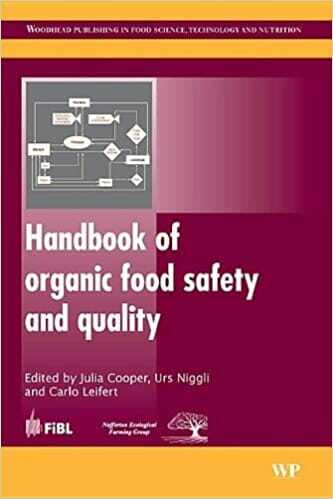
By J Cooper, C Leifert, U Niggli
Handbook of Organic Food Safety and Quality PDF. Due to increasing consumer demand for safe, high quality, ethical foods, the production and consumption of organic food and produce has increased rapidly over the past two decades. In recent years the safety and quality of organic foods has been questioned. If consumer confidence and demand in the industry is to remain high, the safety, quality and health benefits of organic foods must be assured. With its distinguished editor and team of top international contributors, Handbook of organic food safety and quality provides a comprehensive review of the latest research in the area.Part one provides an introduction to basic quality and safety with chapters on factors affecting the nutritional quality of foods, quality assurance and consumer expectations. Part two discusses the primary quality and safety issues related to the production of organic livestock foods including the effects of feeding regimes and husbandry on dairy products, poultry and pork. Further chapters discuss methods to control and reduce infections and parasites in livestock. Part three covers the main quality and safety issues concerning the production of organic crop foods, such as agronomic methods used in crop production and their effects on nutritional and sensory quality, as well as their potential health impacts. The final part of the book focuses on assuring quality and safety throughout the food chain. Chapters focus on post-harvest strategies to reduce contamination of food and produce, and ethical issues such as fair trade products. The final chapters conclude by reviewing quality assurance strategies relating to specific organic food sectors.The Handbook of organic food quality and safety is a standard reference for professionals and producers within the industry concerned with improving and assuring the quality and safety of organic foods.
Part 1 Organic food safety and quality: Introduction and overview: History and concepts of food quality and safety in organic food production and processing
Nutritional quality of foods
Quality assurance, inspection and certification of organic foods
A new food quality concept based on life processes
Food consumers and organic agriculture.
Part 2 Organic livestock foods: Effects of organic and conventional feeding regimes and husbandry methods on the quality of milk and dairy products
Effects of organic husbandry methods and feeding regimes on poultry quality
Effect of organic, husbandry and feeding regimes on pork quality
Organic livestock husbandry methods and the microbiological safety of ruminant
Reducing antibiotic use for mastitis treatment in organic dairy production systems
Reducing anthelmintic use for the control of internal parasites in organic livestock systems
Alternative therapies to reduce enteric bacterial infections and improve the microbiological safety of pig and poultry production systems.
Part 3 Organic crop foods: Dietary exposure to pesticides from organic and conventional food production
Levels of potential health impacts of nutritionally relevant phytochemicals in organic and conventional food production systems
Improving the quality and shelf-life of fruit from organic production systems
Strategies to reduce mycotoxins and fungal alkaloid contamination in organic and conventional production systems
Reducing copper-based fungicide use in organic crop production systems
Pre-harvest strategies to ensure the microbiological safety of fruit and vegetables from manure-based production systems.
Part 4 The organic food chain: Processing, trading and quality assurance: Post-harvest strategies to reduce enteric bacteria contamination of vegetable, nut and fruit products
Fair trade: A basis for adequate producers’ incomes, farm reinvestment and quality and safety focussed production
Development of quality assurance protocols to prevent GM-contamination of organic crops
Integration of quality parameters into food safety focused HACCP systems
| File Size | 4 MB |
| File Format | |
| Download link | Free Download | Become a Premium, Lifetime Deal |
| Support & Updates | Contact Us | Broken Link |
| Join Our Telegram Channel |  |
| More Books: | Browse All Categories |
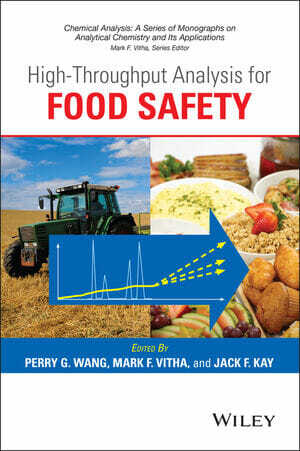
By Perry G. Wang , Mark F. Vitha and Jack F. Kay
High-Throughput Analysis for Food Safety PDF addresses the fundamental concepts involved in the rapid screening for contaminants, including residual veterinary drugs, proteins, metals, hormones, pesticides, and adulterants. Addressing the need for—and requirements of—rapid screening tests, High-Throughput Analysis for Food Safety includes discussions of regulations and compliance issues from perspectives of both domestic and global industry and government contributors. The latest developments and most common techniques are focused on, with an emphasis on the applicability of both stand-alone mass spectrometry methods and coupled techniques. Beginning with a review of high-throughput analysis basics, the authors conduct a full exploration of mass spectrometry applications allowing readers to:
Recent incidents around the globe have turned the food industry toward high-throughput analysis, and the Food Safety Modernization Act has made it a legal requirement in the US. This resource provides an in-depth discussion of the latest advances in methods and instrumentation.
PREFACE xi
CONTRIBUTORS xiii
CHAPTER 1 INTRODUCTION: BASIC PRINCIPLES OF ASSAYS TO BE COVERED, SAMPLE HANDLING, AND SAMPLE PROCESSING 1
Wanlong Zhou, Eugene Y. Chang, and Perry G. Wang
1.1 Introduction 1
1.1.1 Current Situation and Challenges of Food Safety and Regulations 1
1.1.2 Residues and Matrices of Food Analysis and High-Throughput Analysis 2
1.1.3 Food Safety Classifications 3
1.1.4 “High Throughput” Definition 3
1.1.5 Scope of the Book 4
1.2 Advanced Sample Preparation Techniques 5
1.2.1 Automation of Weighing and Preparing Standard Solutions 5
1.2.2 QuEChERS 6
1.2.3 Swedish Extraction Technique (SweEt) and Other Fast Sample Preparation Methods 6
1.2.4 Turbulent Flow Chromatography 7
1.2.5 Pressurized Liquid Extraction 7
1.2.6 Automated 96- and 384-Well Formatted Sample Preparation as well as Automated SPE Workstations 8
1.2.7 Solid-Phase Microextraction 8
1.2.8 Microextraction by Packed Sorbent 9
1.2.9 Liquid Extraction Surface Analysis 9
1.2.10 Headspace GC 10
1.2.11 Summary 10
1.3 Future Perspectives 10
Acknowledgment 11
References 11
CHAPTER 2 SURVEY OF MASS SPECTROMETRY-BASED HIGH-THROUGHPUT METHODS IN FOOD ANALYSIS 15
Lukas Vaclavik, Tomas Cajka, Wanlong Zhou, and Perry G. Wang
2.1 Introduction 15
2.2 Techniques Employing Chromatographic Separation 15
2.2.1 Gas Chromatography–Mass Spectrometry 15
2.2.2 Liquid Chromatography–Mass Spectrometry 21
2.3 Direct Techniques 30
2.3.1 Matrix-Assisted Laser Desorption/Ionization-Mass Spectrometry 30
2.3.2 Headspace (Solid-Phase Microextraction)-Mass Spectrometry E-Nose 37
2.3.3 Ambient Desorption/Ionization-Mass Spectrometry 38
2.4 Concluding Remarks 62
Acknowledgments 62
References 63
CHAPTER 3 QUALITY SYSTEMS, QUALITY CONTROL GUIDELINES AND STANDARDS, METHOD
VALIDATION, AND ONGOING ANALYTICAL QUALITY CONTROL 73
David Galsworthy and Stewart Reynolds
3.1 Introduction 73
3.1.1 Quality System Design 73
3.1.2 Procedures 74
3.1.3 Roles and Responsibilities 74
3.1.4 Quality Manual 74
3.1.5 Document Control 74
3.1.6 Control of Records 75
3.1.7 Audits 75
3.1.8 Validation of Methodology 75
3.1.9 Staff Competency 75
3.1.10 Internal Quality Control 76
3.1.11 Method Performance Criteria 76
3.2 Qualitative Screening Methods 76
3.2.1 Selectivity of Mass Spectrometry-Based Methods 78
3.2.2 Confirmatory Methods 78
3.2.3 Validation of Qualitative Screening Multiresidue Methods for Pesticide Residues in Foods 79
3.3 Elements of the Analytical Workflow 80
3.3.1 Sample Preparation 80
3.3.2 Effects of Sample Processing 81
3.3.3 Extraction Efficiency 81
3.4 Initial Method Validation 81
3.5 Ongoing Analytical Quality Control 86
3.5.1 Internal Quality Control 86
3.5.2 Proficiency Testing 86
3.6 Validation of Qualitative Screening Multiresidue Methods for Veterinary Drug Residues in Foods 87
3.6.1 EU Legislation Covering Method Validation for Veterinary Drug Screening 87
3.6.2 Determination of Specificity/Selectivity and Detection Capability (CCβ) Using the Classical Approach 88
3.6.3 Establishment of a Cutoff Level and Calculation of CCβ 88
3.6.4 Determination of the Applicability 89
3.7 Conclusions 90
References 90
CHAPTER 4 DELIBERATE CHEMICAL CONTAMINATION AND PROCESSING CONTAMINATION 93
Stephen Lock
4.1 Introduction 93
4.2 Heat-Induced Food Processing Contaminants 97
4.3 Packaging Migrants 101
4.4 Malicious Contamination of Food 105
References 111
CHAPTER 5 MULTIRESIDUAL DETERMINATION OF 295 PESTICIDES AND CHEMICAL POLLUTANTS IN ANIMAL FAT BY GEL PERMEATION CHROMATOGRAPHY (GPC) CLEANUP COUPLED WITH GC–MS/MS, GC–NCI-MS, AND LC–MS/MS 117
Yan-Zhong Cao, Yong-Ming Liu, Na Wang, Xin-Xin Ji, Cui-Cui Yao, Xiang Li, Li-Li Shi, Qiao-Ying Chang, Chun-Lin Fan, and Guo-Fang Pang
5.1 Introduction 117
5.1.1 Persistent Organic Pollutants 118
5.1.2 Polycyclic Aromatic Hydrocarbons 119
5.1.3 Polychlorinated Biphenyls 119
5.1.4 Phthalate Esters 120
5.1.5 Multiclass and Multiresidue Analyses 120
5.2 Experiment 122
5.2.1 Instruments 122
5.2.2 Reagents 122
5.2.3 Preparation of Standard Solutions 122
5.2.4 Sample Preparation 123
5.2.5 Analytical Methods 124
5.2.6 Qualitative and Quantitative Determination 136
5.3 Results and Discussion 136
5.3.1 Selection of GPC Cleanup Conditions 136
5.3.2 Selection of Extraction Solvent 138
5.3.3 Comparison of Sample Extraction Methods 150
5.3.4 Comparison of Sample Cleanup 151
5.3.5 Linear Range, LOD, and LOQ 152
5.3.6 Recoveries and Precisions 152
5.3.7 Actual Sample Analysis 157
5.4 Conclusions 161
References 162
CHAPTER 6 ULTRAHIGH-PERFORMANCE LIQUID CHROMATOGRAPHY COUPLED WITH HIGH-RESOLUTION MASS SPECTROMETRY: A RELIABLE TOOL FOR ANALYSIS OF VETERINARY DRUGS IN FOOD 167
María del Mar Aguilera-Luiz, Roberto Romero-González, Patricia Plaza-Bolaños, José Luis Martínez Vidal,
and Antonia Garrido Frenich
6.1 Introduction 167
6.2 Veterinary Drug Legislation 168
6.3 Analytical Techniques for VD Residue Analysis 172
6.3.1 Chromatographic Separation 174
6.3.2 High-Resolution Mass Spectrometers 175
6.4 Food Control Applications 181
6.4.1 Screening Applications 181
6.4.2 Confirmation and Quantification Methods 191
6.4.3 Comparison Studies 195
6.5 Conclusions and Future Trends 201
Acknowledgments 202
References 203
CHAPTER 7 A ROLE FOR HIGH-RESOLUTION MASS SPECTROMETRY IN THE HIGH-THROUGHPUT ANALYSIS AND IDENTIFICATION OF VETERINARY MEDICINAL PRODUCT RESIDUES AND OF THEIR METABOLITES IN FOODS OF ANIMAL ORIGIN 213
Eric Verdon, Dominique Hurtaud-Pessel, and Jagadeshwar-Reddy Thota
7.1 Introduction 213
7.2 Issues Associated with Veterinary Drug Residues and European Regulations 215
7.3 Choosing a Strategy: Targeted or Nontargeted Analysis? 216
7.3.1 Targeted Analysis Using HRMS 218
7.3.2 Nontargeted Analysis Using HRMS: Screening for Unknown Compounds 219
7.4 Application Number 1: Identification of Brilliant Green and its Metabolites in Fish under High-Resolution Mass Spectral Conditions (Targeted and Nontargeted Approaches) 220
7.5 Application Number 2: Targeted and Nontargeted Screening Approaches for the Identification of Antimicrobial
Residues in Meat 223
7.6 Conclusions 227
References 227
CHAPTER 8 HIGH-THROUGHPUT ANALYSIS OF MYCOTOXINS 231
Marta Vaclavikova, Lukas Vaclavik, and Tomas Cajka
8.1 Introduction 231
8.1.1 Legislation and Regulatory Limits 231
8.1.2 Emerging Mycotoxins 237
8.1.3 Analysis of Mycotoxins in the High-Throughput Environment 238
8.2 Sample Preparation 239
8.2.1 Sampling 240
8.2.2 Matrices of Interest 240
8.2.3 Extraction of Mycotoxins 241
8.2.4 Purification of Sample Extracts 246
8.3 Separation and Detection of Mycotoxins 247
8.3.1 Liquid Chromatography–Mass Spectrometry-Based Methods 248
8.3.2 High-Resolution Mass Spectrometry in Mycotoxins Analysis 250
8.4 No-Separation Mass Spectrometry-Based Methods 252
8.4.1 Matrix-Assisted Laser Desorption Ionization–Mass Spectrometry 252
8.4.2 Ambient Ionization Mass Spectrometry 253
8.4.3 Ion Mobility Spectrometry 254
8.4.4 Immunochemical Methods 256
8.5 Conclusions 259
Acknowledgments 259
References 259
INDEX 267
| File Size | 7 MB |
| File Format | |
| Download link | Free Download | Become a Premium, Lifetime Deal |
| Support & Updates | Contact Us | Broken Link |
| Join Our Telegram Channel |  |
| More Books: | Browse All Categories |
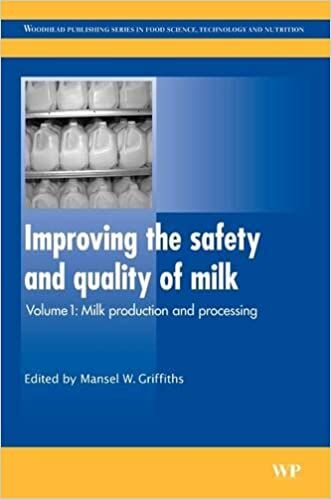
By M. Griffiths
Improving the Safety and Quality of Milk Vol.1 Milk Production and Processing PDF. Consumers demand quality milk with a reasonable shelf-life, a requirement that can be met more successfully by the milk industry through use of improved processes and technologies. Guaranteeing the production of safe milk also remains of paramount importance. Improving the safety and quality of milk provides a comprehensive and timely reference to best practice and research advances in these areas. Volume 1 focuses on milk production and processing. Volume 2 covers the sensory and nutritional quality of cow’s milk and addresses quality improvement of a range of other milk-based products.The opening section of Volume 1: Milk production and processing introduces milk biochemistry and raw milk microbiology. Part two then reviews major milk contaminants, such as bacterial pathogens, pesticides and veterinary residues. The significance of milk production on the farm for product quality and safety is the focus of Part three. Chapters cover the effects of cows’ diet and mastitis, among other topics. Part four then reviews the state-of-the-art in milk processing. Improving the quality of pasteurised milk and UHT milk and novel non-thermal processing methods are among the subjects treated.With its distinguished editor and international team of contributors, volume 1 of Improving the safety and quality of milk is an essential reference for researchers and those in industry responsible for milk safety and quality.
Part 1 Key requirements for milk quality and safety: Milk biochemistry
The microbiological safety of raw milk
Key requirements for milk quality and safety: A processor’s perspective.
Part 2 Contaminants in milk: Pesticides, veterinary residues and other contaminants in milk
Contaminants in milk: Routes of contamination, analytical techniques and methods of control
Good hygienic practice in milk production and processing.
Part 3 Safety and quality issues in raw milk production: Exploiting genetic variation in milk-fat composition of milk from dairy cows
Cows’ diet and milk composition
Mastitis and raw milk quality, safety and yield
Quality assurance schemes on the dairy farm.
Part 4 Safety and quality issues in milk processing: Improving pasteurised and extended shelf-life milk
Improving UHT processing and UHT milk products
Modelling heat processing of dairy products
Removal of bacteria, spores and somatic cells from milk by centrifugation and microfiltration techniques
High pressure processing of milk
Pasteurization of milk with pulsed electric fields
Other novel milk preservation technologies: Ultrasound, irradiation, microwave, radio frequency, ohmic heating, ultraviolet light and bacteriocins
Hazard analysis critical control point (HACCP) and other food safety systems in milk processing
| File Size | 4.5 MB |
| File Format | |
| Download link | Free Download | Become a Premium, Lifetime Deal |
| Support & Updates | Contact Us | Broken Link |
| Join Our Telegram Channel |  |
| More Books: | Browse All Categories |
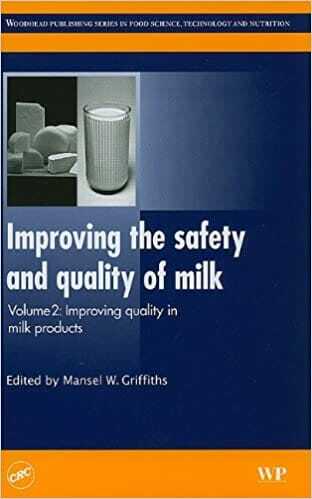
By Mansel Griffiths
Improving the Safety and Quality of Milk Vol.2 Improving Quality in Milk Product PDF. Consumers demand quality milk with a reasonable shelf-life, a requirement that can be met more successfully by the milk industry through use of improved processes and technologies. Guaranteeing the production of safe milk also remains of paramount importance. Improving the safety and quality of milk provides a comprehensive and timely reference to best practice and research advances in these areas. Volume 1 focuses on milk production and processing. Volume 2 covers the sensory and nutritional quality of cow’s milk and addresses quality improvement of a range of other milk-based products.The health aspects of milk, its role in the diet and milk-based functional foods are the focus of the opening section of Volume 2. Part two reviews essential aspects of milk quality, including milk microbial spoilage and chemical deterioration, sensory evaluation, factors affecting milk vitamin and mineral content and the impact of packaging on quality. Chapters in part three look at improving particular products, such as organic milk, goat milk and sheep milk. The impact of milk on the quality of yoghurt and cheese is also covered.With its distinguished editor and international team of contributors, volume 2 of Improving the safety and quality of milk is an essential reference for researchers and those in industry responsible for milk safety and quality.
Part 1 Nutritional aspects of milk: The role of milk in the diet
The health aspects of milk
‘Designer’ milks: Functional foods from milk.
Part 2 Improving milk quality: Understanding and preventing consumer milk microbial spoilage and chemical deterioration
Effects of packaging on milk quality and safety; Sensory evaluation of milk
Instrumental measurement of milk flavour and colour
Analysing and improving the mineral content of milk
Improving the level of vitamins in milk
Managing the environmental impact of the dairy industry: The business case for sustainability.
Part 3 Improving particular milks and milk-based products: Improving organic milk
Improving goat milk
Improving the quality and safety of sheep milk
Improving buffalo milk
Milk quality requirements for yoghurt-making
Milk quality requirements for cheesemaking
Trends in infant formulas: A dairy perspective
Applications of milk components in products other than foods.
| File Size | 4.4 MB |
| File Format | |
| Download link | Free Download | Become a Premium, Lifetime Deal |
| Support & Updates | Contact Us | Broken Link |
| Join Our Telegram Channel |  |
| More Books: | Browse All Categories |
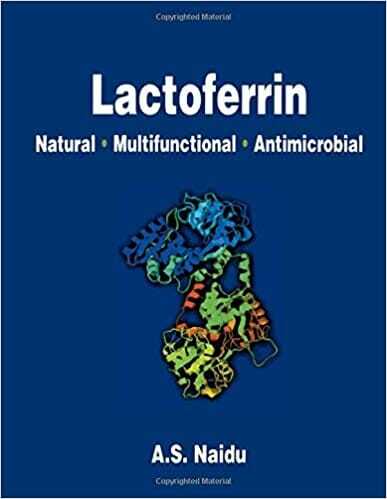
By A S Naidu
Lactoferrin: Natural – Multifunctional – Antimicrobial PDF Book. Illnesses resulting from foodborne pathogens occur at least 6 million times each year and cause an estimated 9,000 deaths. For decades, food microbiologists have developed various effective methods of food protection. However, the constant development of multi-facet food processing technologies and the emergence of potent foodborne pathogens, compromised the efficacy of many antimicrobial interventions. Most technologies also fail to address the problem of bacterial debris remaining on the food surface. Furthermore, some bacteria have the ability to develop resistance to antimicrobial interventions. All such factors contribute to the continuously growing concern of keeping our food safe. Lactoferrin: Natural o Multifunctional o Antimicrobial presents the scientific background on use of this naturally occurring microbial blocking agent as an effective food antimicrobial intervention.
THE SOURCE FOR APPLIED SCIENTIFIC INFORMATION ON LACTOFERRIN AS A NATURAL ANTIMICROBIAL INTERVENTION
Lactoferrin: Natural o Multifunctional o Antimicrobial details microbial blocking technology to protect foods from harmful microbes. Recently, researchers at the Center for Antimicrobial Research, California State Polytechnic University at Pomona found that lactoferrin, when activated, functions as a potent antimicrobial intervention. It protects food by removing harmful bacteria from the surface, and by starving bacteria before they can multiply and produce harmful toxins and it also prevents bacteria from re-attaching to food surfaces. As a result this substance has potential to help the agribusiness and food industry supply safer food products to consumers.
WHY LACTOFERRIN?
Studied for 50 years, lactoferrin is known to have many beneficial biological properties as an integral component of the mammalian innate defense system. Lactoferrin is a broad-spectrum antimicrobial known to inhibit proliferation of bacteria, viruses, fungi, and parasites. Some of its current applications include: dietary supplement, ingredient in infant formula, and a medical treatment to boost the immune system. Because lactoferrin occurs naturally in milk products, it has a long track record of being safely consumed by humans.
Convenient and affordable, lactoferrin could revolutionize the field of food antimicrobial science and technology and the way we protect ourselves from foodborne pathogens.
1- Preface
2- Highlights: Activated Lactoferrin
3- Summary: Protecting Meat From Harmful Bacteria Questions and Answers
4- About the Principal Investigator
5- About the Institution
6- Third-Party References
7- Excerpts
| File Size | 6 MB |
| File Format | |
| Download link | Free Download | Become a Premium, Lifetime Deal |
| Support & Updates | Contact Us | Broken Link |
| Join Our Telegram Channel |  |
| More Books: | Browse All Categories |
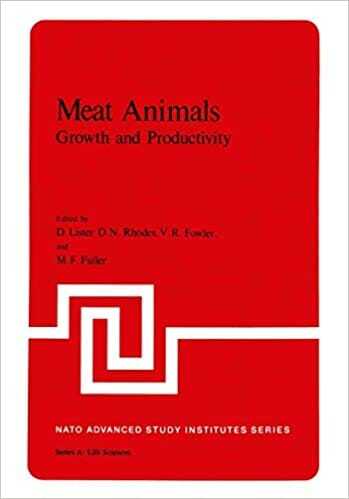
By D. Lister
1 What Do We Want from the Carcass?
I The Efficiency of Meat-Producing Systems
2 The Relevance of Various Measures of Efficiency
3 The Influence of Reproductive Rate on the Efficiency of Meat Production in Animal Populations
4 The Optimum Size and Structure of Enterprise
II The Efficiency of Food Conversion —
5 Comparison of Biological Mechanisms for Conversion of Feed to Meat
6 Efficiencies of Energy Utilization during Growth
7 Efficiency of Protein Utilization
III The Development of Muscle
8 Towards More Efficient Meat Animals: A Theoretical Consideration of Constraints at the Level of the Muscle Cell
9 Factors Affecting Muscle Size and Structure
IV The Development of Fatty Tissue
10 Physiological Significance of Lipids
11 The Control of Fat Absorption, Deposition and Mobilization in Farm Animals
V Endocrine Regulation
12 Hormonal Control of Muscle Growth
13 Protein-Fat Interactions
VI Overall Control of Growth
14 The Right Size
15 The Central Control of Growth: Its Connection with Age-dependent Disease
VII Environmental Control of Growth
16 Environmental Control of Growth: The Maternal Environment
17 The Nutritional Control of Growth
18 Climate and Season
VIII Physiological Significance of Differences in Body Composition
19 The Physiological Basis of Reproductive Efficiency
20 Hormonal Influences on the Growth, Metabolism and Body Composition of Pigs
21 Observations of the Apparent Antagonism between Meat-producing Capacity and Meat Quality in Pigs
IX The Technology of Producing Meat Animals
22 Meat Production from Ruminants
23 Advances in Pig Technology
X The Use of Genetic Potential —
24 The Choice of Selection Objectives in Meat-producing Animals —
25 Using the World’s Genetic Resources —
XI The Challenge of New Foods
26 Vegetable Protein as a Human Food
Background and Present Situation
27 Vegetable Protein as a Human Food
Research and Development in the National Food Research Institute
28 Single Cell Protein as a Feedstuff
XII Final Perspectives
Final Perspectives
Participants.
| File Size | 41 MB |
| File Format | |
| Download link | Free Download | Become a Premium, Lifetime Deal |
| Support & Updates | Contact Us | Broken Link |
| Join Our Telegram Channel |  |
| More Books: | Browse All Categories |
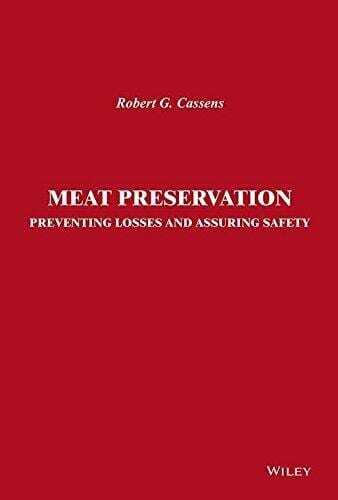
By Robert G. Cassens
Meat Preservation: Preventing Losses and Assuring Safety PDF is written as an integrated and all-encompassing text that includes historical aspects and trends, discussion of basic background information, the evaluation and status of techniques and procedures, and treatments of potential future developments. The latter are particularly important because based on consumer desires, there is a definite trend developing to produce and market meat and meat products that have been subjected to a lesser degree of preservation, yet appear to be fresh and more healthful. Today, there is an intense interest to produce the safest meat possible. The overriding theme of Meat Preservation, provides the understanding of the science of meat and discussion for using known technologies to achieve the goal of safe meat of high quality.
Prof. Cassens has gathered information on the preservation of meat from many sources, and organized the material of this important subject in a highly readable form. Proper preservation of meat is important to prevent economic loss due to spoilage, and to prevent the transmission of foodborne illness. To make the text flow smoothly, references are not cited directly, but are given as general sources.
Meat Preservation will be useful for undergraduates, and also valuable to workers and researchers in meat and animal science, food scientists and technologists, and anyone interested in the preservation of meat and meat products.
Preface.
1. Introduction.
2. Understanding Muscle and Meat.
3. The Meat Industry.
4. Preservation Against What.
5. Physical Methods of Preservation.
6. Chemical Methods of Preservation.
7. Microbiological Methods of Preservation.
8. Managing Preservation.
9. Summary and Conclusions.
Preferences.
Index.
| File Size | 7.2 MB |
| File Format | |
| Download link | Free Download | Become a Premium, Lifetime Deal |
| Support & Updates | Contact Us | Broken Link |
| Join Our Telegram Channel |  |
| More Books: | Browse All Categories |